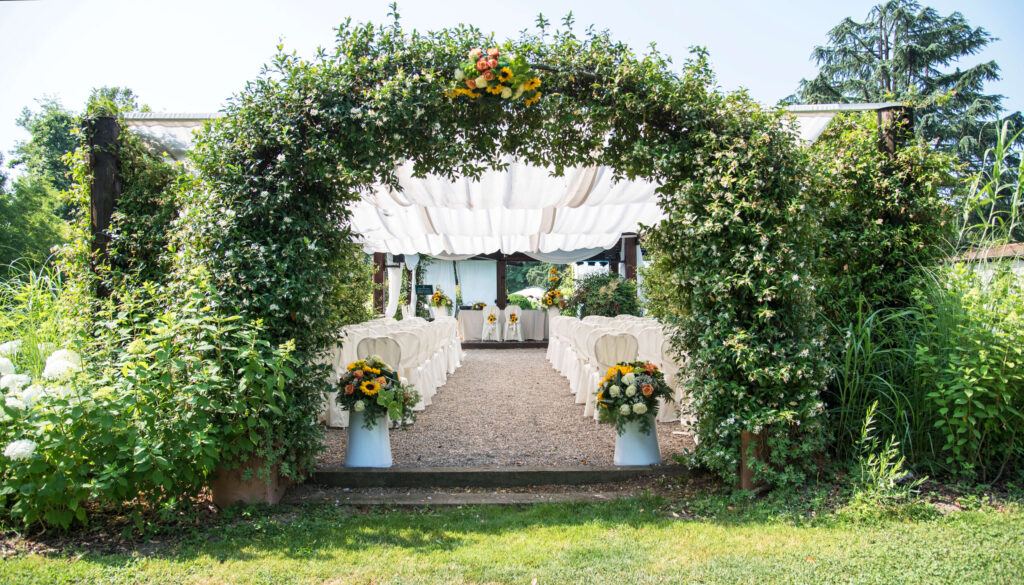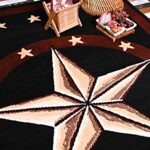
Elevating the Sacred Space: A Comprehensive Guide to Wedding Alter Decor
The wedding alter, often the focal point of a ceremony, is more than just a platform; it’s a symbol of love, commitment, and new beginnings. The decor surrounding the altar plays a crucial role in setting the mood, reflecting the couple’s personalities, and creating a memorable experience for everyone present. This comprehensive guide delves into the nuances of wedding alter decor, providing insights, inspiration, and practical advice for creating a stunning and meaningful space. From traditional designs to modern interpretations, we’ll explore various styles, materials, and considerations to help you design the perfect wedding alter.
The importance of the wedding alter decor cannot be overstated. It’s the backdrop against which vows are exchanged, rings are presented, and a couple begins their journey together. The aesthetic of the alter should complement the overall wedding theme, venue, and the couple’s individual preferences. Thoughtful wedding alter decor enhances the ceremony, creating a sense of occasion and reverence. It also serves as a beautiful setting for photographs, ensuring lasting memories of this special day. The right wedding alter decor is an investment in the overall experience, making the ceremony more meaningful and visually stunning.
Understanding the Fundamentals of Wedding Alter Decor
Before diving into specific design elements, it’s essential to understand the fundamental aspects of wedding alter decor. This includes the physical structure of the altar itself, the surrounding space, and the desired ambiance. Consider the following:
- The Altar Structure: Is it a traditional arch, a simple table, or a more unique structure? The shape and size of the altar will influence the decor choices.
- The Venue: Is the ceremony indoors or outdoors? The venue’s existing features, such as architecture and natural surroundings, will impact the design.
- The Theme: Is the wedding formal, casual, rustic, modern, or bohemian? The theme should be reflected in the wedding alter decor.
- The Couple’s Preferences: What colors, flowers, and styles do the couple love? The decor should reflect their personalities and tastes.
By considering these factors, you can establish a solid foundation for planning the wedding alter decor. This will help you make informed decisions and avoid costly mistakes. The goal is to create a cohesive and visually appealing space that resonates with the couple and their guests.
Exploring Different Styles of Wedding Alter Decor
Wedding alter decor offers a vast array of stylistic options, each with its unique charm and appeal. Here are some of the most popular styles:
Classic Elegance
Classic elegance emphasizes timeless beauty and sophistication. This style often features:
- Color Palette: Soft, neutral tones such as white, ivory, and blush, with accents of gold or silver.
- Flowers: Traditional blooms like roses, lilies, and hydrangeas, arranged in symmetrical patterns.
- Materials: Elegant fabrics like satin and lace, with crystal accents.
- Overall Impression: A sense of refined grace and understated luxury.
Rustic Charm
Rustic charm celebrates natural beauty and a relaxed atmosphere. This style often incorporates:
- Color Palette: Earthy tones such as browns, greens, and creams, with pops of color from wildflowers.
- Flowers: Wildflowers, greenery, and seasonal blooms, arranged in a loose, organic style.
- Materials: Wood, burlap, and mason jars, creating a warm and inviting feel.
- Overall Impression: A sense of warmth, comfort, and natural beauty.
Modern Minimalism
Modern minimalism focuses on clean lines, simplicity, and a contemporary aesthetic. This style often features:
- Color Palette: Monochromatic schemes, such as white, black, and gray, with occasional pops of vibrant color.
- Flowers: Single-stemmed flowers, geometric arrangements, or no flowers at all.
- Materials: Sleek materials like metal, glass, and concrete, creating a sophisticated look.
- Overall Impression: A sense of simplicity, sophistication, and contemporary style.
Bohemian Rhapsody
Bohemian rhapsody embraces a free-spirited, eclectic aesthetic. This style often includes:
- Color Palette: Rich, vibrant colors, such as jewel tones, with patterns and textures.
- Flowers: A mix of wildflowers, pampas grass, and unusual blooms, arranged in a free-flowing style.
- Materials: Macrame, dream catchers, and vintage textiles, creating a whimsical and artistic feel.
- Overall Impression: A sense of freedom, creativity, and individuality.
Choosing the right style of wedding alter decor is a crucial step in creating a cohesive and visually stunning ceremony. Consider the couple’s personalities, the venue, and the overall wedding theme when making your selection.
Essential Elements of Wedding Alter Decor
Several key elements contribute to the overall aesthetic of wedding alter decor. Understanding these elements will help you create a beautiful and meaningful space:
Flowers and Greenery
Flowers and greenery are often the most prominent elements of wedding alter decor. They add color, texture, and fragrance to the space. Consider the following:
- Flower Types: Choose flowers that complement the wedding theme and color palette. Consider roses, peonies, lilies, hydrangeas, and seasonal blooms.
- Greenery: Incorporate greenery like eucalyptus, ferns, and ivy to add texture and depth.
- Arrangement Styles: Experiment with different arrangement styles, such as arches, garlands, and bouquets.
- Seasonal Considerations: Utilize seasonal flowers and greenery for a fresh and cost-effective approach.
Fabric and Draping
Fabric and draping can transform the look of the altar, adding elegance and softness. Consider the following:
- Fabric Types: Choose fabrics that complement the wedding theme and venue. Consider satin, lace, chiffon, and linen.
- Draping Styles: Experiment with different draping styles, such as flowing curtains, asymmetrical swags, and simple backdrops.
- Color and Texture: Select fabrics in colors and textures that enhance the overall aesthetic.
Lighting
Lighting plays a crucial role in setting the mood and highlighting the wedding alter decor. Consider the following:
- Types of Lighting: Use a combination of natural light, string lights, candles, and spotlights.
- Placement: Strategically place lighting to create a warm and inviting atmosphere.
- Candle Safety: If using candles, ensure they are placed safely and are supervised.
Personalized Touches
Adding personalized touches to the wedding alter decor can make the ceremony more meaningful and memorable. Consider the following:
- Photos: Display photos of the couple, their families, or loved ones.
- Signage: Use custom signage to display the couple’s names, wedding date, or favorite quotes.
- Heirlooms: Incorporate family heirlooms or meaningful objects that represent the couple’s history.
- Personalized Vows: Ensure the altar space is conducive to the exchange of vows.
Planning and Execution of Wedding Alter Decor
Planning and executing the wedding alter decor requires careful consideration and attention to detail. Here’s a step-by-step guide:
Step 1: Define the Vision
Start by discussing the couple’s preferences, the wedding theme, and the venue. Create a mood board with inspiration images and ideas. Determine the overall style and color palette for the wedding alter decor.
Step 2: Create a Budget
Set a realistic budget for the wedding alter decor. Research the costs of flowers, fabrics, lighting, and other materials. Prioritize the essential elements and allocate funds accordingly.
Step 3: Source Materials and Vendors
Source the necessary materials and vendors. This may include florists, fabric suppliers, lighting specialists, and rental companies. Compare prices and select vendors that align with the budget and the couple’s vision.
Step 4: Plan the Layout
Plan the layout of the wedding alter decor. Consider the placement of flowers, fabrics, lighting, and other elements. Create a detailed plan or sketch to guide the setup process.
Step 5: Setup and Installation
Execute the setup and installation of the wedding alter decor. Follow the plan and ensure all elements are in place. Make any necessary adjustments to achieve the desired aesthetic.
Step 6: Final Touches
Add final touches to the wedding alter decor. This may include arranging flowers, draping fabric, and adjusting lighting. Ensure the space is clean, tidy, and ready for the ceremony.
DIY vs. Professional Wedding Alter Decor
Deciding whether to DIY the wedding alter decor or hire a professional is a significant decision. Consider the following:
DIY Advantages
- Cost Savings: DIY projects can save money on labor costs.
- Personalization: DIY allows for greater personalization and creativity.
- Control: DIY gives the couple more control over the design and execution.
Professional Advantages
- Expertise: Professionals have experience and expertise in creating stunning wedding alter decor.
- Time Savings: Professionals can save time and reduce stress for the couple.
- Quality: Professionals can ensure high-quality results and attention to detail.
The best approach depends on the couple’s budget, skills, and time constraints. If the couple is on a tight budget and enjoys DIY projects, they can consider taking on some aspects of the wedding alter decor themselves. If they value expertise, time savings, and high-quality results, hiring a professional may be the better option.
Troubleshooting Common Wedding Alter Decor Challenges
Even with careful planning, challenges can arise during the wedding alter decor process. Here are some common issues and solutions:
- Budget Overruns: Set a realistic budget and stick to it. Prioritize essential elements and consider DIY options to save money.
- Vendor Issues: Communicate clearly with vendors and confirm all details in writing. Have backup plans in case of unexpected issues.
- Weather Concerns: If the ceremony is outdoors, prepare for inclement weather. Have a backup plan for moving the ceremony indoors.
- Venue Restrictions: Be aware of any venue restrictions regarding decor, such as the use of candles or the attachment of decorations to walls.
By anticipating potential challenges and developing contingency plans, you can ensure a smooth and successful wedding alter decor process.
Conclusion: Creating a Memorable Wedding Alter
Creating the perfect wedding alter decor is an essential aspect of planning a memorable wedding ceremony. By understanding the fundamentals, exploring different styles, incorporating essential elements, and planning carefully, you can design a beautiful and meaningful space that reflects the couple’s personalities and celebrates their love. Whether you choose to DIY or hire a professional, the goal is to create a visually stunning and emotionally resonant setting for the exchange of vows and the start of a new chapter. The wedding alter decor sets the tone for the entire ceremony, making it a truly unforgettable experience for the couple and their guests.
To further enhance your knowledge on wedding planning, explore [See also: Wedding Planning Checklist] and [See also: Budgeting for Your Wedding].

